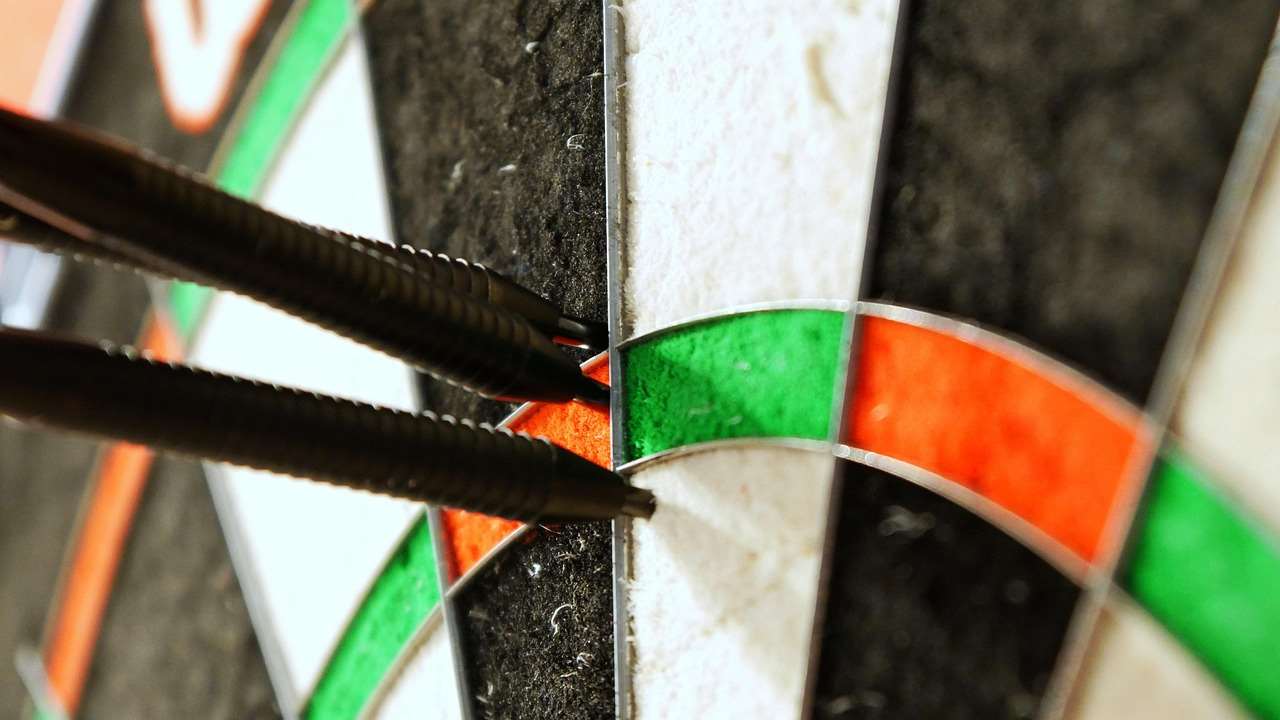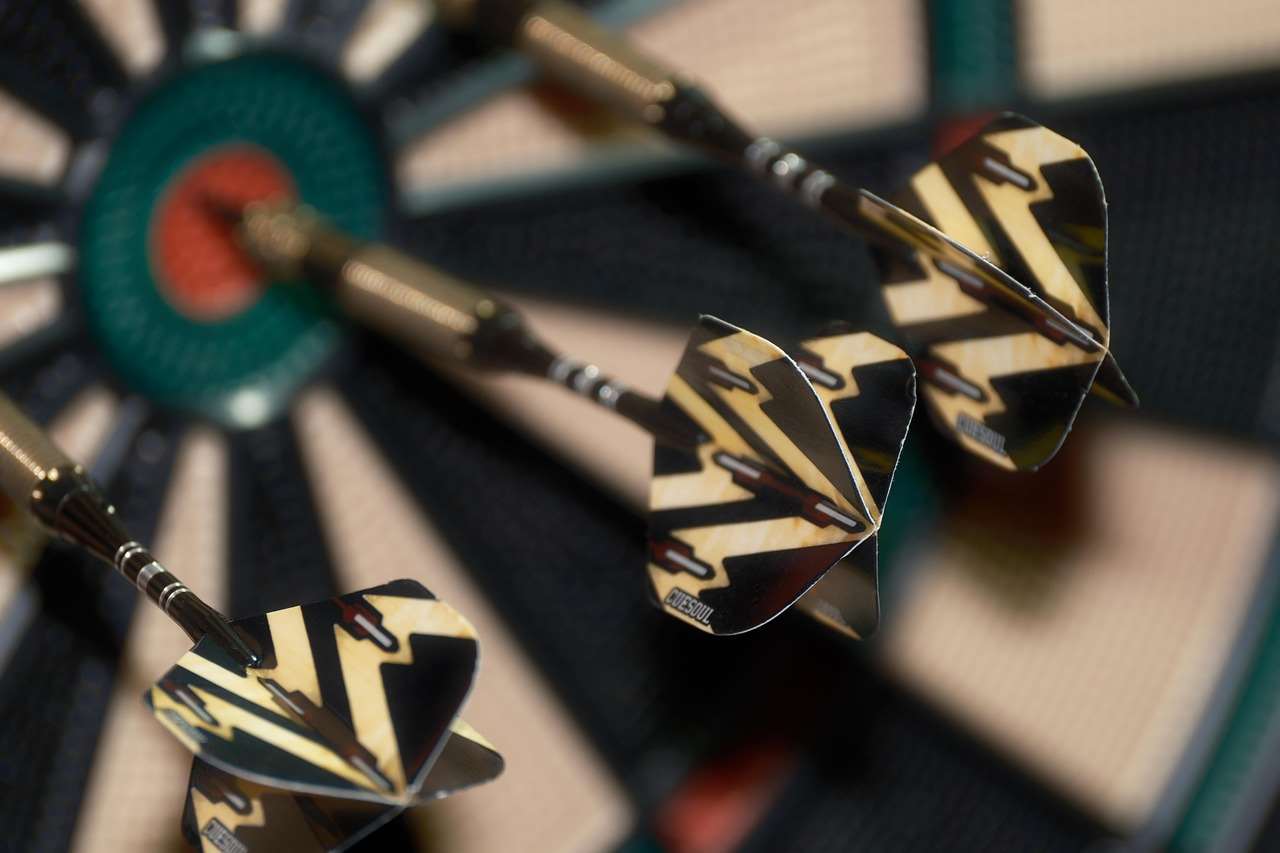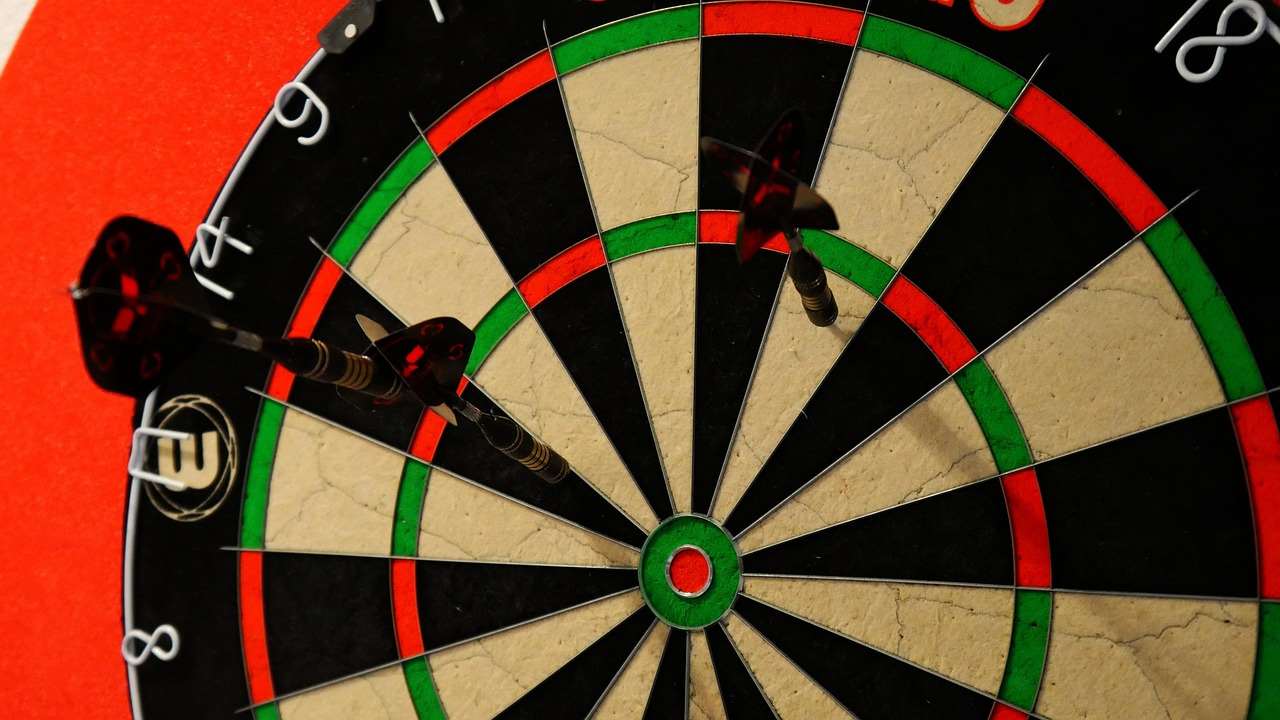The essence of fair play in darts, especially amongst players of varying skill levels, lies in implementing an effective individual player handicap setting. This levels the playing field, making matches more competitive and enjoyable for everyone. This article dives deep into the strategies, methods, and considerations for establishing such handicaps, ensuring every game is a thrilling contest.
⚠️ Still Using Pen & Paper (or a Chalkboard)?! ⚠️
Step into the future! The Dart Counter App handles all the scoring, suggests checkouts, and tracks your stats automatically. It's easier than you think!
Try the Smart Dart Counter App FREE!Ready for an upgrade? Click above!
Understanding the Need for Individual Player Handicap Setting
In any game of skill, disparities in player abilities can lead to predictable outcomes and diminished enjoyment, especially for less experienced players. Darts is no exception. Without some form of equalization, seasoned players will consistently outperform beginners, creating a frustrating experience for those still developing their skills. Handicap systems address this issue by giving weaker players a calculated advantage, thus making the match more balanced. This is particularly important when modifying rules for mixed-level dart players, ensuring that everyone feels they have a chance to win.
The importance of a well-designed handicap system goes beyond simply making games more competitive. It also fosters a more inclusive and encouraging environment. When beginners aren’t constantly losing, they’re more likely to continue practicing and improving their skills. This, in turn, contributes to a larger and more vibrant darts community. Furthermore, using handicaps can be a fun way to experiment with fun dart game variations with modified rules.
Methods for Determining Individual Player Handicap Setting
Several methods can be used to determine the appropriate handicap for each player. The best approach will depend on the specific group of players, the frequency of play, and the desired level of accuracy. Here are some of the most common and effective methods:
- Averaging Scores: This method involves calculating the average score each player achieves over a series of games. A higher average indicates a better player, and the handicap is then calculated based on the difference between the players’ averages. For example, if one player averages 60 points per round and another averages 40, the weaker player might receive a handicap of 20 points per round. This method requires some initial games to establish a baseline average, which can be tracked manually or through a darts scoring app.
- Ranking Systems: A ranking system assigns each player a numerical rating based on their performance. This rating can be adjusted after each game, reflecting wins and losses. The difference in ratings between two players determines the handicap. Elo ratings, commonly used in chess, can be adapted for darts. This is especially beneficial when incorporating alternative darts rules for home play.
- Fixed Point Adjustment: A simpler method involves awarding a fixed number of points to the weaker player at the start of each game. This number can be determined through trial and error or based on an initial assessment of the players’ skills. While less precise than averaging or ranking, it offers a quick and easy way to level the playing field.
- Starting Score Adjustment: This variation is very popular in 501 games. Instead of starting at 501, a weaker player might start at a lower number, such as 401 or 301, effectively giving them a head start. This is one method of looking at how to make darts fairer with handicap rules.

Detailed Example: Using Averaging for Handicap Calculation
Let’s say you have two players, Alice and Bob. Over 10 games, Alice averages 55 points per round, while Bob averages 40. The difference is 15 points. To create a fair match, you could give Bob a handicap of 15 points per round, meaning that at the end of each round, 15 points are added to Bob’s score. This way, even if Alice scores slightly higher, Bob has a chance to catch up due to his handicap. Adjustments may be needed after a few more games to fine-tune the handicap if one player consistently outperforms the other.
Remember to track scores accurately. This ensures that the handicap calculation remains valid and reflects the current skill levels of the players. Consistent scorekeeping also helps identify trends and areas where players can improve. This is especially helpful when adapting darts rules for beginners.
Factors to Consider When Setting Handicaps
Establishing an effective individual player handicap setting is not just about applying a formula. Several factors need to be considered to ensure the handicap is fair and appropriate:
- Consistency of Play: Some players are more consistent than others. A player with a lower average but greater consistency might be harder to beat than a player with a higher average but erratic performance. This inconsistency can affect the accuracy of a handicap based solely on averages.
- Player Improvement: As players practice and improve, their handicap should be adjusted accordingly. Regular reviews of player performance are essential to ensure the handicap remains relevant.
- Psychological Impact: The handicap should not be so large that it discourages the stronger player or so small that it provides no real benefit to the weaker player. Finding the right balance is crucial to maintaining motivation and engagement for both players.
- Game Type: The type of dart game being played can also influence the appropriate handicap. Handicaps in 501 might differ from those in games like Cricket or Round the Clock.
It’s also important to consider the learning curve of each player. Beginners may improve rapidly at first, requiring more frequent adjustments to their handicap. More experienced players may show slower, more gradual improvement. This requires a more nuanced approach to handicap adjustments.

Fine-Tuning the Handicap System
The initial handicap setting is just the first step. It’s crucial to monitor the results of games and make adjustments as needed. Here are some tips for fine-tuning your individual player handicap setting:
- Track Game Results: Keep detailed records of game scores, averages, and handicaps used. This data will provide valuable insights into the effectiveness of the handicap system.
- Solicit Player Feedback: Ask players for their opinions on the fairness of the handicap. Their feedback can help identify potential issues and guide adjustments.
- Adjust Incrementally: Make small adjustments to the handicap rather than large, drastic changes. This allows you to fine-tune the system without upsetting the balance of the game.
- Consider Re-Ranking Periodically: Schedule regular periods for re-evaluating player rankings and handicaps. This ensures that the system remains accurate and reflects the current skill levels of all players.
Addressing Challenges in Handicap Setting
One common challenge is dealing with players who sandbag, intentionally underperforming to gain a lower handicap. This can be difficult to detect, but consistent monitoring of scores and player behavior can help identify potential sandbaggers. Another challenge is accommodating players who have a bad day or are experiencing temporary dips in form. It’s important to avoid making drastic handicap adjustments based on a single game or short period of poor performance.
Technology and Tools for Managing Handicaps
Several technologies and tools can simplify the process of managing individual player handicap setting. Darts scoring apps are available for smartphones and tablets that automatically track scores, calculate averages, and manage handicaps. These apps can save time and effort, making it easier to implement and maintain a fair and accurate handicap system.
- DartConnect: A popular platform for tracking scores and managing leagues. It offers advanced features for handicap calculation and reporting.
- MyDartTraining: A mobile app that tracks your progress, analyzes your throws, and calculates your average. This can be used to determine your handicap against other players.
- Web-based Spreadsheets: A simple but effective way to track scores and calculate handicaps manually. Google Sheets or Microsoft Excel can be used to create custom spreadsheets tailored to your specific needs.
These tools not only simplify scorekeeping but also provide valuable data for analyzing player performance and making informed decisions about handicap adjustments. Using technology can significantly improve the accuracy and efficiency of your handicap system.
Examples of Handicap Systems in Action
Many darts leagues and tournaments utilize handicap systems to create more competitive and engaging events. These systems can range from simple fixed-point adjustments to more complex rating-based models. Studying these examples can provide valuable insights into the practical application of individual player handicap setting.
For instance, some leagues use a modified version of the Elo rating system, where players gain or lose points based on the outcome of each game. The amount of points gained or lost depends on the difference in ratings between the players. This system automatically adjusts handicaps over time, reflecting changes in player performance.

Creating a Fair and Inclusive Darts Environment
The ultimate goal of individual player handicap setting is to create a fair and inclusive darts environment where players of all skill levels can enjoy the game and compete on a level playing field. A well-designed handicap system not only enhances the competitiveness of matches but also fosters a sense of community and encourages player development.
Remember that the key to a successful handicap system is flexibility and adaptability. Regularly review and adjust the system to ensure it continues to meet the needs of your players. By embracing a thoughtful and data-driven approach to handicap setting, you can create a more enjoyable and rewarding darts experience for everyone involved. This can be especially helpful when considering creative dart rules for parties and social gatherings.

The Future of Handicap Systems in Darts
As technology continues to evolve, we can expect to see even more sophisticated handicap systems emerge in the world of darts. Machine learning and artificial intelligence could be used to analyze player data and predict future performance, leading to more accurate and personalized handicaps. Furthermore, virtual reality and augmented reality technologies could offer new ways to visualize and interact with handicap information.
The future of individual player handicap setting is bright, with the potential to transform the way darts is played and enjoyed by people of all skill levels. By embracing innovation and continuing to refine our approach to handicap setting, we can ensure that darts remains a vibrant and inclusive sport for generations to come. Be sure to also review Basic Darts Fundamentals for Beginners to enhance your understanding of the game.
Conclusion
Implementing an effective individual player handicap setting is essential for creating a fair, competitive, and enjoyable darts experience for players of all skill levels. By understanding the various methods for determining handicaps, considering the key factors that influence player performance, and utilizing technology to simplify the process, you can create a system that levels the playing field and encourages player development. Remember to track game results, solicit player feedback, and adjust the handicap system as needed to ensure it remains accurate and relevant.
Ready to take your darts games to the next level? Start implementing these strategies today and watch as your matches become more exciting and engaging for everyone involved. Check out our other resources for more tips and tricks on improving your darts game!
Hi, I’m Dieter, and I created Dartcounter (Dartcounterapp.com). My motivation wasn’t being a darts expert – quite the opposite! When I first started playing, I loved the game but found keeping accurate scores and tracking stats difficult and distracting.
I figured I couldn’t be the only one struggling with this. So, I decided to build a solution: an easy-to-use application that everyone, no matter their experience level, could use to manage scoring effortlessly.
My goal for Dartcounter was simple: let the app handle the numbers – the scoring, the averages, the stats, even checkout suggestions – so players could focus purely on their throw and enjoying the game. It began as a way to solve my own beginner’s problem, and I’m thrilled it has grown into a helpful tool for the wider darts community.